Do you have a question about the Panasonic CS-C95KE and is the answer not in the manual?
Procedures for cleaning and maintaining the air conditioner unit and its components.
Guidance on identifying and resolving common operational problems and errors.
Additional tips and information for optimal use and understanding of the unit.
Strategies and tips for reducing energy consumption and improving operational efficiency.
Essential safety guidelines to follow during the installation process of the air conditioner.
Critical safety instructions for operating the air conditioner to prevent hazards.
Identification and description of components for the indoor unit of the air conditioner.
Details of parts visible and accessible when the indoor unit's front panel is opened.
Identification and description of components for the outdoor unit of the air conditioner.
List and description of included accessories for the air conditioner.
Identification and description of the remote control buttons and functions.
Details of components accessible when the remote control's protective cover is opened.
Important notes and tips regarding the proper use and handling of the remote control.
Information on accessing and using components when the remote control's back cover is opened.
Steps and guidelines for preparing the indoor unit before initial operation.
Additional notes and considerations for the preparation phase before operating the unit.
Instructions on how to correctly insert batteries into the remote control.
Procedure for setting the current time on the remote control and unit.
Guidance on battery type, lifespan, and replacement for the remote control.
Overview of the different operating modes available for the air conditioner.
Detailed explanation of the cooling mode's functionality and settings.
Detailed explanation of the automatic operation mode and its features.
Detailed explanation of the soft dry mode for dehumidification.
Instructions on how to adjust and select the fan speed for optimal airflow.
Guide to adjusting the vertical louvers for directing airflow.
Instructions for manually adjusting the horizontal louvers for airflow direction.
Details on the fan-only circulation mode and automatic airflow volume.
Procedure for programming the timer to turn the unit off automatically.
Instructions on how to cancel programmed timer settings.
Important notes regarding timer settings and operation, including cancellation.
Examples and recommendations for using the timer for various situations like sleeping or leaving home.
Additional points to consider regarding timer functionality and display.
Explanation of the sleep mode for comfortable temperature control during rest.
Detailed description of how the sleep mode operates and its effects.
Information on the economy mode for reducing power consumption.
Information on the powerful mode for rapid temperature adjustment.
Details on how economy and powerful modes function and their operational characteristics.
Instructions for gently cleaning the indoor unit casing and the remote control.
Procedure for cleaning the air filters to maintain cooling efficiency.
Step-by-step guide for removing, washing, and reinstalling the front panel.
Instructions on how to replace the air purifying filters for optimal air quality.
Key points to check before the start of the cooling season for proper unit performance.
Steps for preparing the unit for long-term storage to prevent damage or issues.
Rationale for performing seasonal inspections in addition to regular cleaning.
Addressing common operational sounds and minor delays experienced during normal use.
Troubleshooting common issues encountered with the Soft Dry mode operation.
Explanation for intermittent fan stopping during automatic airflow settings.
Troubleshooting steps when the air conditioner does not start or operate.
Identifying causes and solutions for loud or unusual noises during unit operation.
Diagnosing reasons why the air conditioner is not cooling the room effectively.
Listing serious conditions that necessitate immediate professional service or dealer contact.
Details on using the Auto Operation button for basic control when the remote is unavailable.
Information about the sounds indicating signal reception status from the remote control.
Explanation of the automatic restart function after power failures.
Guidance on reprogramming the timer after an electrical interruption.
Advice on protecting the unit from lightning strikes and power surges.
Tips on adjusting temperature settings to maximize energy savings.
Importance of regular filter cleaning and replacement for optimal performance.
Advice on managing room conditions like doors, windows, and sunlight for efficiency.
Guidance on ensuring proper airflow around the outdoor unit for effective cooling.
Recommendations for using timer and sleep modes to prevent energy wastage.
Mandatory earthing, power cord safety, and limitations on self-servicing.
Prohibitions on use in explosive atmospheres and emergency power disconnection procedures.
Cautionary advice to disconnect the unit from the power supply when not in use.
Guide to identifying and connecting the mains lead wires based on color coding.
Procedures for cleaning and maintaining the air conditioner unit and its components.
Guidance on identifying and resolving common operational problems and errors.
Additional tips and information for optimal use and understanding of the unit.
Strategies and tips for reducing energy consumption and improving operational efficiency.
Essential safety guidelines to follow during the installation process of the air conditioner.
Critical safety instructions for operating the air conditioner to prevent hazards.
Identification and description of components for the indoor unit of the air conditioner.
Details of parts visible and accessible when the indoor unit's front panel is opened.
Identification and description of components for the outdoor unit of the air conditioner.
List and description of included accessories for the air conditioner.
Identification and description of the remote control buttons and functions.
Details of components accessible when the remote control's protective cover is opened.
Important notes and tips regarding the proper use and handling of the remote control.
Information on accessing and using components when the remote control's back cover is opened.
Steps and guidelines for preparing the indoor unit before initial operation.
Additional notes and considerations for the preparation phase before operating the unit.
Instructions on how to correctly insert batteries into the remote control.
Procedure for setting the current time on the remote control and unit.
Guidance on battery type, lifespan, and replacement for the remote control.
Overview of the different operating modes available for the air conditioner.
Detailed explanation of the cooling mode's functionality and settings.
Detailed explanation of the automatic operation mode and its features.
Detailed explanation of the soft dry mode for dehumidification.
Instructions on how to adjust and select the fan speed for optimal airflow.
Guide to adjusting the vertical louvers for directing airflow.
Instructions for manually adjusting the horizontal louvers for airflow direction.
Details on the fan-only circulation mode and automatic airflow volume.
Procedure for programming the timer to turn the unit off automatically.
Instructions on how to cancel programmed timer settings.
Important notes regarding timer settings and operation, including cancellation.
Examples and recommendations for using the timer for various situations like sleeping or leaving home.
Additional points to consider regarding timer functionality and display.
Explanation of the sleep mode for comfortable temperature control during rest.
Detailed description of how the sleep mode operates and its effects.
Information on the economy mode for reducing power consumption.
Information on the powerful mode for rapid temperature adjustment.
Details on how economy and powerful modes function and their operational characteristics.
Instructions for gently cleaning the indoor unit casing and the remote control.
Procedure for cleaning the air filters to maintain cooling efficiency.
Step-by-step guide for removing, washing, and reinstalling the front panel.
Instructions on how to replace the air purifying filters for optimal air quality.
Key points to check before the start of the cooling season for proper unit performance.
Steps for preparing the unit for long-term storage to prevent damage or issues.
Rationale for performing seasonal inspections in addition to regular cleaning.
Addressing common operational sounds and minor delays experienced during normal use.
Troubleshooting common issues encountered with the Soft Dry mode operation.
Explanation for intermittent fan stopping during automatic airflow settings.
Troubleshooting steps when the air conditioner does not start or operate.
Identifying causes and solutions for loud or unusual noises during unit operation.
Diagnosing reasons why the air conditioner is not cooling the room effectively.
Listing serious conditions that necessitate immediate professional service or dealer contact.
Details on using the Auto Operation button for basic control when the remote is unavailable.
Information about the sounds indicating signal reception status from the remote control.
Explanation of the automatic restart function after power failures.
Guidance on reprogramming the timer after an electrical interruption.
Advice on protecting the unit from lightning strikes and power surges.
Tips on adjusting temperature settings to maximize energy savings.
Importance of regular filter cleaning and replacement for optimal performance.
Advice on managing room conditions like doors, windows, and sunlight for efficiency.
Guidance on ensuring proper airflow around the outdoor unit for effective cooling.
Recommendations for using timer and sleep modes to prevent energy wastage.
Mandatory earthing, power cord safety, and limitations on self-servicing.
Prohibitions on use in explosive atmospheres and emergency power disconnection procedures.
Cautionary advice to disconnect the unit from the power supply when not in use.
Guide to identifying and connecting the mains lead wires based on color coding.
| Type | Split System |
|---|---|
| COP | 3.61 |
| Refrigerant | R410A |
| Power Supply | 220-240V, 50Hz |
| Cooling Capacity | 2.5 kW |
| Noise Level (Outdoor) | 48 dB |




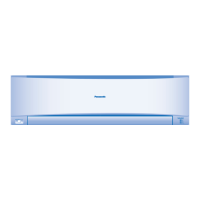
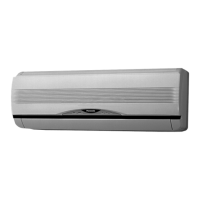

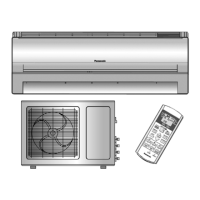
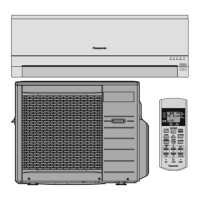
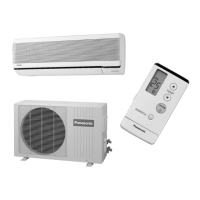
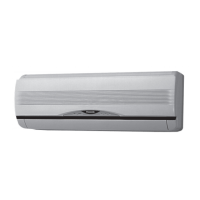
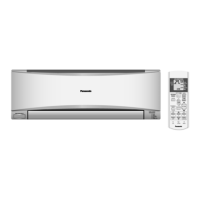
